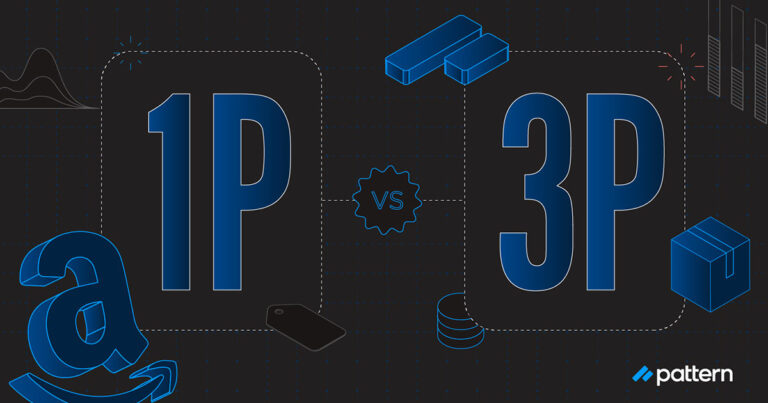Editor’s Note: This story has been updated to reflect our most recent and accurate data as of Sept. 2020.
Curating positive ratings and reviews on your Amazon listing is one of the easiest ways to increase consumer trust, brand equity, and sales. That’s why Pattern’s Amazon experts decided to find out what happens to sales, conversion, and overall sessions when you increase your Amazon star rating from an average rating (3.5) to a good rating (4.5).
We analyzed all the star ratings across our products to find out how changes in star rating affect other key metrics on the Amazon marketplace. Let’s dig in to our findings, how Amazon’s recent rating and review structure change has already forever changed the Amazon rating landscape, and a few strategies for how you can increase your star rating.
Conversion rate goes up by 12% with an Amazon star rating increase from 3 to 5
Our study found that, controlling for sessions, brand, and category, star rating has a coefficient of .044. This suggests that, for every increase in star rating by 1, there is about a 4-5% increase in conversion rate. At 3.5, the conversion rate was 24%. Conversion rate increased to 29% at 4.5—an increase of 1 star rating.
From a star rating of 3 to 5, there was an increase of 12% in conversion rate.

You can see how Amazon star rating affects conversion rate on all of our data overall on this graph below.

Amazon rating and review structure change
Last year, Amazon changed its review structure to allow customers to leave a star rating on a product without having to write out an actual product review as well. The change seems to counterbalance the fact that, before the change, customers were more likely to leave a negative review than a positive one.
However, as Marketplace Pulse notes, it’s not doing anything to help with fake product reviews on Amazon. If anything, it’s making Amazon’s fake review problem worse as customers can’t inherently tell whether simple star ratings are trustworthy or not.
The change has had two visible impacts: customers are leaving more reviews, and, on the whole, more positive reviews. Since the change began around 4 months ago, various brands like AirPods and Hanes have seen a drastic increase in the amount of ratings received, which have in turn increased their star rating from anywhere between .1 to .3 stars.
This is significant because, as we’ve already discussed, ratings have impacts on conversion rates. Plus, Amazon has become customers’ go-to when checking product reviews.
How do you increase your review rating?
As we’ve seen, getting your Amazon star rating from average to good is important. So how do you get that star rating up? Here are a few simple strategies for increasing your star rating on Amazon.
1. Always respond to negative reviews (usually 3-star reviews or below).
Responding to poor customer feedback actually increases purchase intent. Brand responses improve product sentiment among potential buyers because they can see that the seller is active and cares about the customer journey. For example, shoppers who saw brand responses to negative reviews were 186% more likely to purchase than those who didn’t.
2. Provide genuine relation-building responses
Don’t just copy and paste a corporate response. People can tell the difference. Lengthier, more detailed, and more balanced customer feedback is considered the most helpful. If you messed up, own it and try to do better next time. Don’t try and blame the customer. The customer is always right!
3. Include a CTA in your response.
Remember: Reviews often contain calls to action and opportunities to respond. If you leave an option for disgruntled customers to receive a return and support on your end, they’re much more likely to come back (and other potential customers reading your response are more likely to shop there).
However, be careful not to ask too much more of your dissatisfied customer—if you ask them to take too many additional steps they’re more likely to be unsatisfied with the overall experience.
Want to get an analysis of how a star rating increase on your Amazon listings could impact your sales? Contact a Pattern representative today.





